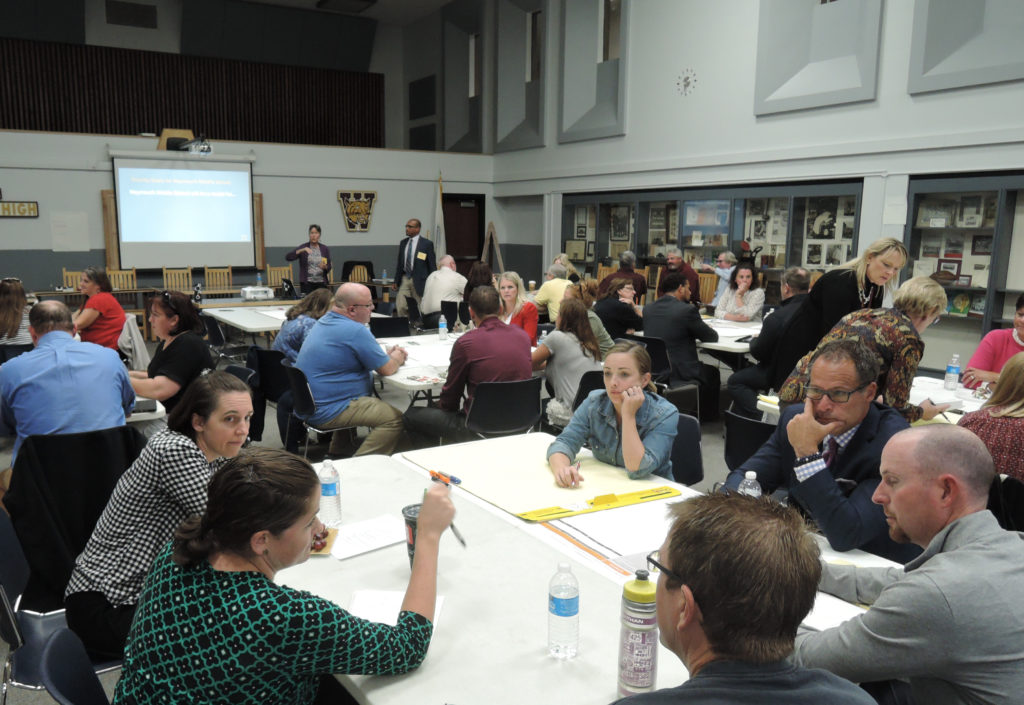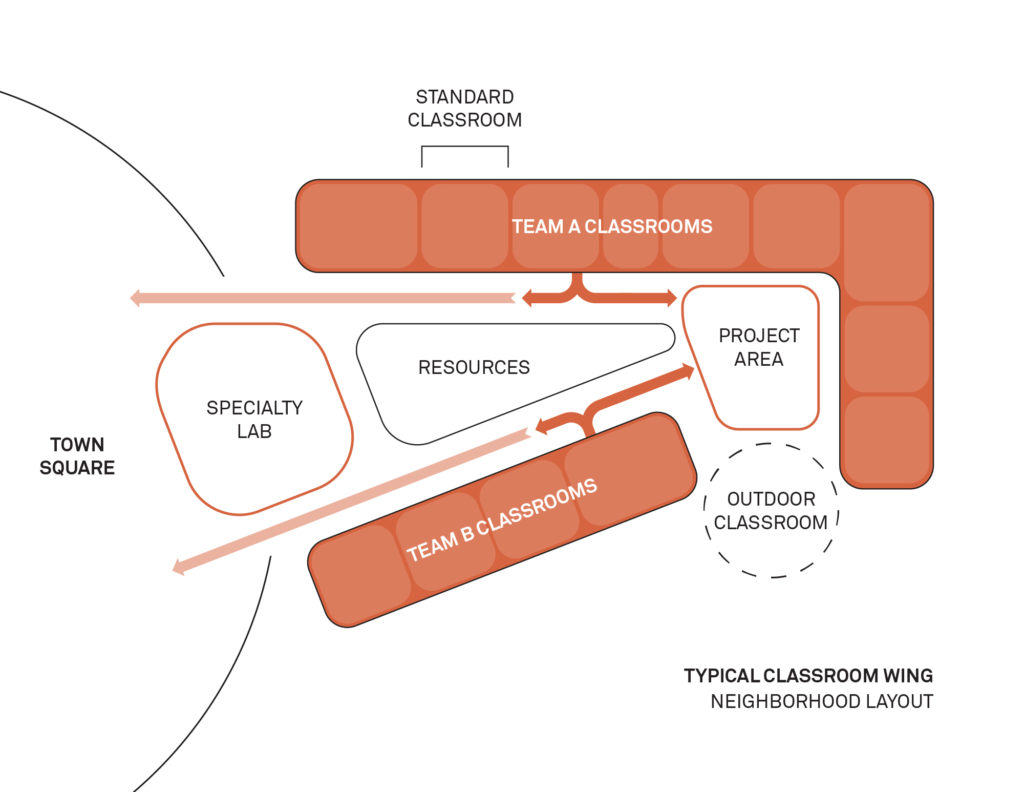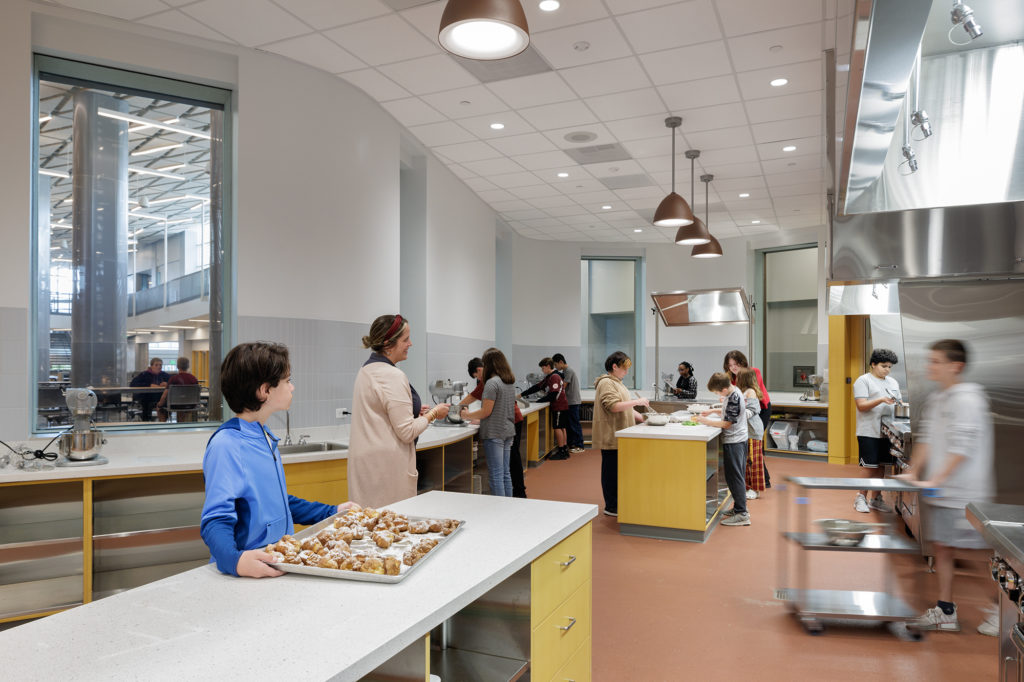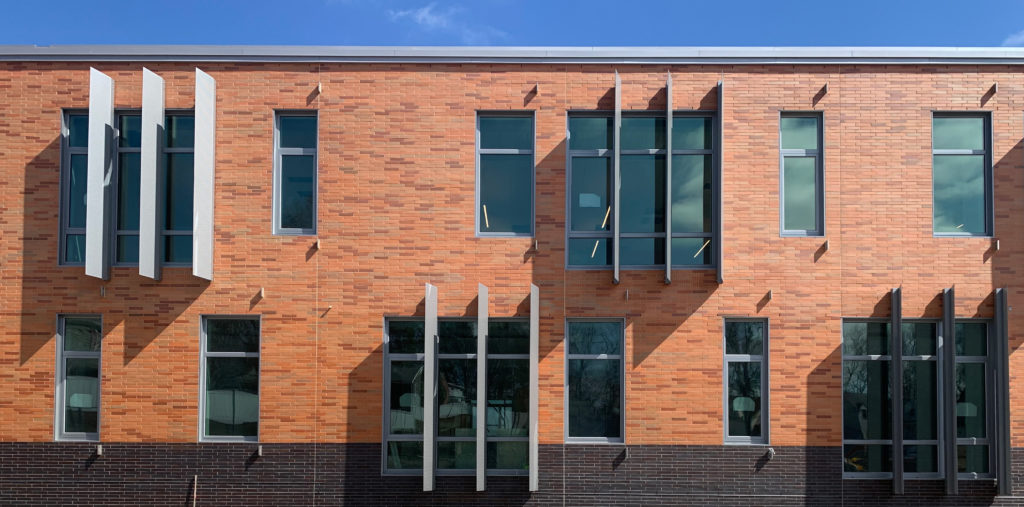Motivation, mission, and means were the Town of Weymouth’s springboard for planning and constructing the Maria Weston Chapman Middle School, whose doors opened to 1,470 students in grades 6, 7, and 8 on September 6, 2022. The $164.2 million facility replaced the outdated Chapman School on the same site, and at 252,170 square feet, it is now the largest middle school in Massachusetts. Robert Hedlund, Weymouth’s mayor, declared it “The most significant capital project that the Town has ever undertaken in its history.”
An idea gets traction
The project began in April 2015, when the town submitted a statement of interest to the Massachusetts School Building Authority (MSBA). In November 2016, the MSBA board invited Weymouth to conduct a feasibility study. After hiring HMFH Architects as the project designer and Hill International as project manager, the $1 million study commenced and ultimately presented a solid rationale for building a new facility instead of renovating the existing one.
With project goals and objectives firmly in place, schematic design began in 2018. The “New Chapman” team — the Weymouth School Building Committee, HMFH, and Hill — asked hard questions: How can a very large school be made welcoming to students? And how can it foster smaller learning communities, encourage meaningful collaboration among staff and students, and increase social-emotional wellness for its users?

Integrating community and educator goals with design and planning decision making
Because the manner and environments in which education is delivered has evolved significantly since the original Chapman School was built in 1963, the team sought guidance and inspiration from the local community. An open, transparent, and inclusive process guided by MSBA’s policy and procedures unfolded over the course of 27 months, with more than 50 public opportunities for community input. In addition to a project website, the extensive outreach program included 30 building committee meetings, six public forums, three project visioning sessions, two sustainability workshops, an online survey, and meetings with parents, teachers, and public safety officials.
From this considerable input a clear vision emerged: Create a 21st century middle school that embraces inclusive, equitable, personalized, and interdisciplinary instruction in a neighborhood atmosphere that fosters exploration and growth. Supporting the vision was the collective opinion that “We’re not just replacing a building. The new Chapman will be designed around an educational program that gives our kids and grandkids improved educational opportunities!”
Using multiple education planning strategies to increase student wellbeing in a large school
In response to concerns over the size of the school, educational planning and academic teaming spaces were structured to form concentric rings of support around each student. The space organization strategy progressed from the whole school to grade levels, and then to smaller academic neighborhoods. The administrative structure within each neighborhood consists of multiple teams and classrooms. The 7th and 8th grades have two teams with five educators in each neighborhood focused on five courses of study. Grade 6 has ten small teams in the neighborhood to compensate for the transition from elementary to middle school and a change in curriculum. The organizational strategy around teams provides equity and a “home-base” identity for all students. It is also where they spend much of their school day and is the central planning unit for the whole school.
The second ring of support pairs two teams in a neighborhood, providing expanded resources, planning and supervision. The neighborhoods are grouped around a collaborative area consisting of a double height presentation space where students can share their ideas and an adjacent outdoor classroom for messy work and learning in nature.

Building design that supports student career path development and community needs
Creating an academic environment that checked all the boxes for fostering students’ academic, physical, social, and emotional well-being and met MSBA’s and the Massachusetts Department of Elementary and Secondary Education’s requirements was the team’s highest priority.

As a feeder for Weymouth High School’s robust career and technical education programs, Chapman’s curriculum and layout are centered around unique “exploratories” — elective tracks that focus on modern, STEAM-driven paths in career tech, ranging from robotics and fabrication to culinary arts and broadcast media. Specialized lab spaces on each floor support this exploration and act as links between each of the classroom wings and the 9,500-square-foot “Town Square” cafeteria.

Centrally located and bracketed by the three academic wings and the gymnasium, the Town Square was described by John Sullivan, chair of the Weymouth School Committee as “The crossroads of the school, and the place where students will break bread together and build community.” This pivotal space, along with the gymnasium, accommodates public use of the school after hours. A state-of-the-art, 850-seat auditorium serves the middle school’s active drama program as well as high school and community theater groups. The new building’s design also provides for additional public uses; a 755-square-foot community wellness suite, which has a separate entrance, adds to the 1,000 square feet allotted to the nurse-staffed medical suite.

Student health and wellbeing by design
Physical fitness is fundamental to the health and wellbeing of both mind and body, and Chapman Middle School’s design amplifies opportunities for exercise from the outside in, starting with a 0.5-mile fitness loop encircling the 15.87-acre site. Along the fitness loop are three exercise stations and two structured fitness areas, one of which features a multi-game court, the other created according to Universal Design principles. All facilities are open for use by the community. Indoors, the 18,414-square-foot physical education wing — the only portion of the old school that was retained and repurposed — encompasses an 11,435-square-foot gymnasium, a fitness studio with climbing wall, weight room, and ancillary space.
Close attention was paid to the curriculum’s special education component, with significantly more space than the original facility dedicated to these offerings and supports, encompassing a variety of dedicated rooms interspersed throughout the building on both floors. The goal of these spaces was to provide varying levels of support for the children within the program, and their size, configuration, and location promotes flexibility and heightens comfort. There are small and large group rooms, two de-escalation rooms, physical and occupational therapy, sensory and transition rooms, and dedicated spaces for a communication enhancement program, life skills learning, social-emotional learning, academic support, and an administrative suite.
Additional means of support and grade level identity were realized through the use of color: Each of the three academic wings was assigned a different color per floor. Further characterizing each wing is a unique, bold, and colorful 12-foot by 25-foot graphic defining a grade theme: empathy for 6th grade, diversity for 7th grade, and inclusion for 8th grade.

The architecture itself sparks a sense of wonder through soaring 30-foot-high spaces with second-floor pedestrian walkways open to the Town Square, and a view into exploratory labs that face it. As important as natural light is to productivity and well-being, the design team recognized that it can also be problematic. To counter glare on teaching surfaces, exterior windows have fixed sunscreens tailored to each solar orientation.
It took a village
More than 50 different contractors, companies and consultants were a part of the new Chapman Middle School project. “It is the best team I have ever been a part of,” said Ted Langill, chair of the Maria Chapman Middle School Building Committee. “This was an enormous project, with many obstacles, that had to be completed under a tight deadline. There was little room for error. Hill, HMFH Architects and [construction manager] BOND Building Construction were outstanding in managing this project and achieving all our goals.”
To learn more on this topic, attend “Creating Space for Student Wellbeing”, Thursday, November 3 at 2:00 PM at EDspaces 2022.

